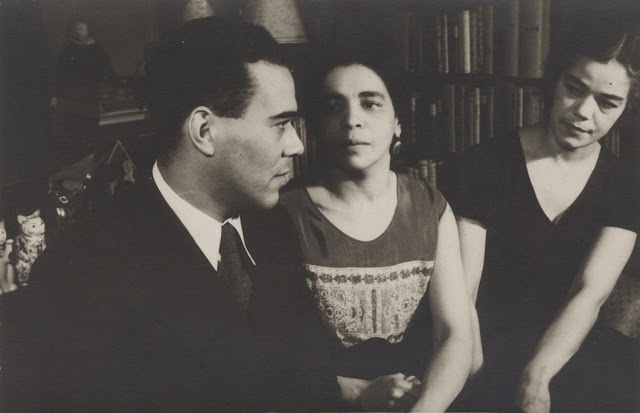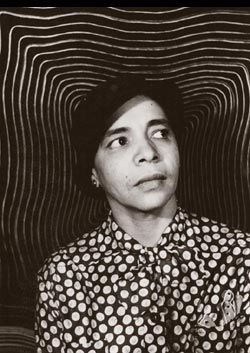Abram Piatt, born May 2, 1821
Abram Sanders Piatt was born in Cincinnati, Ohio, the son of Benjamin McCullough Piatt of Ohio and Elizabeth Barnett of Virginia. He was 40 years old when the Civil War began.
Albion Tourgee, born May 2, 1838
Albion Winegar Tourgée was born in rural Williamsfield, Ohio on May 2, 1838, the son of a Methodist farm family that migrated to the Western Reserve from Massachusetts. He was 23 years old when the Civil War began.
Wilmer McLean, born May 3, 1814
Wilmer McLean was born on May 3, 1814 in Alexandria, Virginia. He was 47 years old when the Civil War began.
Montgomery Meigs, born May 3, 1816
Montgomery Cunningham Meigs was born in Augusta, Georgia on May 3, 1816. He was the son of Dr. Charles Delucena Meigs and Mary Montgomery Meigs. His father was a nationally known obstetrician and professor of obstetrics at Jefferson Medical College in Philadelphia, Pennsylvania. He was 45 years old when the Civil War began.
Jean Davenport, born May 3, 1829
Jean Margaret Davenport was born May 3, 1829, in Wolverhampton, England. She was 32 years old when the Civil War began.
Lorinda Anna Blair Etheridge Hooks, born May 3, 1839
Lorinda Anna Blair was born May 3, 1839 in Detroit, Michigan, the only child of her parents. She was 22 years old when the Civil War began.
Martin Delany, born May 6, 1812
Martin Robison Delany was born free in Charles Town, Virginia (later West Virginia) to Pati Peace and Samuel Delany. Although his father, Samuel, was an enslaved carpenter, his mother was a free woman and a seamstress. He was 49 years old when the Civil War began.
"Madame Restell" (Ann Trow Lohman), born May 6, 1812
Ann Caroline Trow was born in Painswick, Gloucestershire, England. Her father, John Trow, was a woolen mill laborer. She was 49 years old when the Civil War began.
Cyrus Pringle, born May 6, 1838
Wilmer McLean, born May 3, 1814
Wilmer McLean was born on May 3, 1814 in Alexandria, Virginia. He was 47 years old when the Civil War began.
Montgomery Meigs, born May 3, 1816
Montgomery Cunningham Meigs was born in Augusta, Georgia on May 3, 1816. He was the son of Dr. Charles Delucena Meigs and Mary Montgomery Meigs. His father was a nationally known obstetrician and professor of obstetrics at Jefferson Medical College in Philadelphia, Pennsylvania. He was 45 years old when the Civil War began.
Jean Davenport, born May 3, 1829
Jean Margaret Davenport was born May 3, 1829, in Wolverhampton, England. She was 32 years old when the Civil War began.
Lorinda Anna Blair Etheridge Hooks, born May 3, 1839
Lorinda Anna Blair was born May 3, 1839 in Detroit, Michigan, the only child of her parents. She was 22 years old when the Civil War began.
Martin Delany, born May 6, 1812
Martin Robison Delany was born free in Charles Town, Virginia (later West Virginia) to Pati Peace and Samuel Delany. Although his father, Samuel, was an enslaved carpenter, his mother was a free woman and a seamstress. He was 49 years old when the Civil War began.
"Madame Restell" (Ann Trow Lohman), born May 6, 1812
Ann Caroline Trow was born in Painswick, Gloucestershire, England. Her father, John Trow, was a woolen mill laborer. She was 49 years old when the Civil War began.
Cyrus Pringle, born May 6, 1838
Cyrus Guernsey Pringle was born on May 6, 1838 in East Charlotte, Vermont. He was 23 years old when the Civil War began.
John Wayles Jefferson, born May 8, 1835
John Wayles Hemings was born in Charlottesville, Virginia, on May 8, 1835, the first son of Eston Hemings, a former slave who was seven-eights of European descent, and Julia Ann Isaacs, the mixed-race daughter of a wealthy Jewish merchant. John is believed to have been the grandson of Sarah ("Sally") Hemings, a slave, and her master, Thomas Jefferson, the third President of the United States. John was 26 years old when the Civil War began.
John Brown, born May 9, 1800
John Brown was born May 9, 1800, in Torrington, Connecticut. He was the fourth of eight children of Owen Brown and Ruth Mills Brown. He died more than a year before the Civil War began, at the age of 59.
Belle Boyd, born May 9, 1843
Isabella Marie Boyd was born in Berkeley County, Virginia, the eldest child of Benjamin Reed and Mary Rebecca (Glenn) Boyd. The Boyds and the Glenns were well-known families of the area. Belle's grandfather, James Glenn, served in the Revolutionary War and was presented several awards by General George Washington for outstanding service. Members of the Boyd family were merchants and owned several general stores in the area. She was 18 years old when the Civil War began.
John Sherman, born May 10, 1823
John Sherman was born in Lancaster, Ohio to Mary Hoyt Sherman and Charles Robert Sherman, a justice in the Ohio Supreme Court. He was the eighth child in the family that would eventually number eleven children: six sons and five daughters. He was 39 years old when the Civil War began.
P.B.S. Pinchback, born May 10, 1837
Pinckney Benton Stewart was born May 10, 1837, in Macon, Georgia, the eighth of ten children of Eliza Stewart, a former slave, and Major William Pinchback, a planter and her former master. They lived together as husband and wife, but interracial marriage was forbidden by state laws. P.B.S. Pinchback was 24 years old when the Civil War began.
Zebulon Vance, born May 13, 1830
Zebulon Baird Vance was born at the family homestead along Reems Creek in Buncombe County, North Carolina, the third child and second son of eight children. His parents were David Vance II and Mira Margaret Baird Vance. Vance was named for his maternal grandfather, Zebulon Baird. He was 31 years old when the Civil War began.
William Seward, born May 16, 1801
William Henry Seward was born in Florida, New York on May 16, 1801, the fourth of six children born to Samuel Sweezy Seward and his wife Mary Jennings Seward. At the time there were only a dozen buildings in the village of Florida. The Seward house consisted of 5 rooms on the main floor with a staircase leading to a large loft made up of 2 bedrooms with sloping walls and a large chimney. The Sewards owned three slaves who lived in the kitchen and the attic above it. He was 60 years old when the Civil War began.
Margaret Fuller, born May 23, 1810
Sarah Margaret Fuller was born May 23, 1810, in Cambridgeport, Massachusetts, the first child of Timothy Fuller, an attorney, and Margaret Crane Fuller. The Fullers were descended from Thomas Fuller, a pious and poetry-writing Englishman who settled in Salem in 1638. Timothy’s father, a clergyman, had opposed the signing of the United States Constitution on the grounds that it condoned human slavery. She died 11 years before the Civil War began, at the age of 40.
John Wayles Jefferson, born May 8, 1835
John Wayles Hemings was born in Charlottesville, Virginia, on May 8, 1835, the first son of Eston Hemings, a former slave who was seven-eights of European descent, and Julia Ann Isaacs, the mixed-race daughter of a wealthy Jewish merchant. John is believed to have been the grandson of Sarah ("Sally") Hemings, a slave, and her master, Thomas Jefferson, the third President of the United States. John was 26 years old when the Civil War began.
John Brown, born May 9, 1800
John Brown was born May 9, 1800, in Torrington, Connecticut. He was the fourth of eight children of Owen Brown and Ruth Mills Brown. He died more than a year before the Civil War began, at the age of 59.
Belle Boyd, born May 9, 1843
Isabella Marie Boyd was born in Berkeley County, Virginia, the eldest child of Benjamin Reed and Mary Rebecca (Glenn) Boyd. The Boyds and the Glenns were well-known families of the area. Belle's grandfather, James Glenn, served in the Revolutionary War and was presented several awards by General George Washington for outstanding service. Members of the Boyd family were merchants and owned several general stores in the area. She was 18 years old when the Civil War began.
John Sherman, born May 10, 1823
John Sherman was born in Lancaster, Ohio to Mary Hoyt Sherman and Charles Robert Sherman, a justice in the Ohio Supreme Court. He was the eighth child in the family that would eventually number eleven children: six sons and five daughters. He was 39 years old when the Civil War began.
P.B.S. Pinchback, born May 10, 1837
Pinckney Benton Stewart was born May 10, 1837, in Macon, Georgia, the eighth of ten children of Eliza Stewart, a former slave, and Major William Pinchback, a planter and her former master. They lived together as husband and wife, but interracial marriage was forbidden by state laws. P.B.S. Pinchback was 24 years old when the Civil War began.
Zebulon Vance, born May 13, 1830
Zebulon Baird Vance was born at the family homestead along Reems Creek in Buncombe County, North Carolina, the third child and second son of eight children. His parents were David Vance II and Mira Margaret Baird Vance. Vance was named for his maternal grandfather, Zebulon Baird. He was 31 years old when the Civil War began.
William Seward, born May 16, 1801
William Henry Seward was born in Florida, New York on May 16, 1801, the fourth of six children born to Samuel Sweezy Seward and his wife Mary Jennings Seward. At the time there were only a dozen buildings in the village of Florida. The Seward house consisted of 5 rooms on the main floor with a staircase leading to a large loft made up of 2 bedrooms with sloping walls and a large chimney. The Sewards owned three slaves who lived in the kitchen and the attic above it. He was 60 years old when the Civil War began.
Margaret Fuller, born May 23, 1810
Sarah Margaret Fuller was born May 23, 1810, in Cambridgeport, Massachusetts, the first child of Timothy Fuller, an attorney, and Margaret Crane Fuller. The Fullers were descended from Thomas Fuller, a pious and poetry-writing Englishman who settled in Salem in 1638. Timothy’s father, a clergyman, had opposed the signing of the United States Constitution on the grounds that it condoned human slavery. She died 11 years before the Civil War began, at the age of 40.

























































